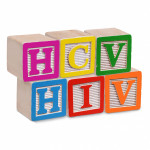People with diabetes who undergo successful direct-acting antiviral (DAA) treatment for hepatitis C virus (HCV) experience improvements in key markers of diabetes. That’s according to the first-ever systematic review examining how curing HCV is associated with glyco-metabolic outcomes, specifically changes in glycated hemoglobin (HbA1c) and fasting plasma glucose (FPG).
A better understanding of how curing hep C affects diabetes is critical, since about one third of the HCV population has type 2 diabetes. Concerningly, type 2 diabetes apparently raises the risk of hepatocellular carcinoma (HCC, the most common form of liver cancer) among people with hep C.
A handful of studies have indicated that hep C directly impairs the metabolism of glucose through viral proteins and does so indirectly by raising levels of inflammation-prompting immune proteins called cytokines.
Recent studies have indicated that people with diabetes and HCV who get the virus cured through DAA therapy do indeed see their HbA1c decline and also taper their use of hypoglycemic medications such as insulin or metformin. But scientists’ confidence in the validity of such findings remains tenuous, given that certain studies have not shown sustained diabetes-related benefits associated with curing HCV.
Seeking greater clarity on these issues, a research team based in Italy conducted a systematic review and meta-analysis of scientific papers that provided data on HbA1c and FPG among people with diabetes, including the results of tests taken before and after DAA treatment for HCV. After screening 287 papers, they more carefully reviewed 39 of them and wound up with 11 studies for their analysis, which they published in Acta Diabetologica. The meta-analysis focused on five of these studies, which included 2,750 people with diabetes (99 percent of them had type 2 diabetes) and HCV.
All 11 studies were conducted between 2016 and 2018. Excluding the sole case study reviewed for the analysis, the study populations ranged in size between 13 and 2,435 people treated for hep C, for a total of 3,214 people with diabetes and HCV. Between 89.5 percent and 100 percent of the study cohorts were cured of the virus, mostly thanks to treatment with Sovaldi (sofosbuvir)-based regimens. The study populations had an average age of 52 to 71 years old. Two of the studies included people coinfected with HCV and HIV.
Participants in these studies were followed for 12 weeks to 28 months after completing DAA treatment.
A pair of the studies compared glyco-metabolic outcomes among both those who did and did not achieve an HCV cure after DAA treatment. These papers found significant differences in glyco-metabolic control measures between these two groups, but it is possible that such differences were driven by variations in study participants’ adherence to their diabetes and hep C drug regimens. People who are more likely to stick with their DAA medications are probably more likely to do the same with their insulin and thus achieve benefits on both plains.
Eight papers provided information about changes in the use of diabetes medications. In seven of these studies, curing hep C was associated with the tapering of such treatments, including insulin and other hypoglycemic drugs.
Among 26 people in one study who had received a liver transplant and were taking diabetes treatment, 10 (38 percent) were able to stop their diabetes medication after getting their HCV cured.
Eight (73 percent) of the studies concluded that curing HCV was associated with an improvement in glyco-metabolic control, which means three studies saw no such benefit tied to beating the virus.
The study authors’ meta-analysis found that, in the five studies that provided suitable data, curing hep C was associated with an average decrease of 0.45 percent in HbA1c. (Changes in HbA1c varied considerably between studies.) This figure is just below the decrease of 0.5 percent considered clinically significant for people with diabetes and a reason to consider alterations to treatment for the condition.
As for changes in FPG in the four studies that provided the necessary data, the average decline was 22.03 milligrams per deciliters. (The results varied to an “extreme” extent between studies.)
This pair of findings about HbA1c and FPG improvements indicated that curing HCV does lead to significant glyco-metabolic control, one achieved regardless of the particular DAA regimen prescribed. However, the clinical significance of these shifts remains uncertain pending further research.
This paper’s findings are limited by the small number of papers included in the analysis as well as the considerable variations seen in the associations between HCV cure and average declines in HbA1c and FPG.
“Larger studies, with a more complete baseline assessment and a prolonged follow-up, are needed to appreciate fully the long-term implications and health outcomes of the endocrine [diabetes-related] benefits of [curing HCV],” the study authors concluded. “These findings serve also to indicate the necessity for a close monitoring of metabolic parameters in diabetic patients receiving DAAs, to guide the tapering of anti-diabetic drugs to avoid hypoglycemic [health] events.”







Comments
Comments